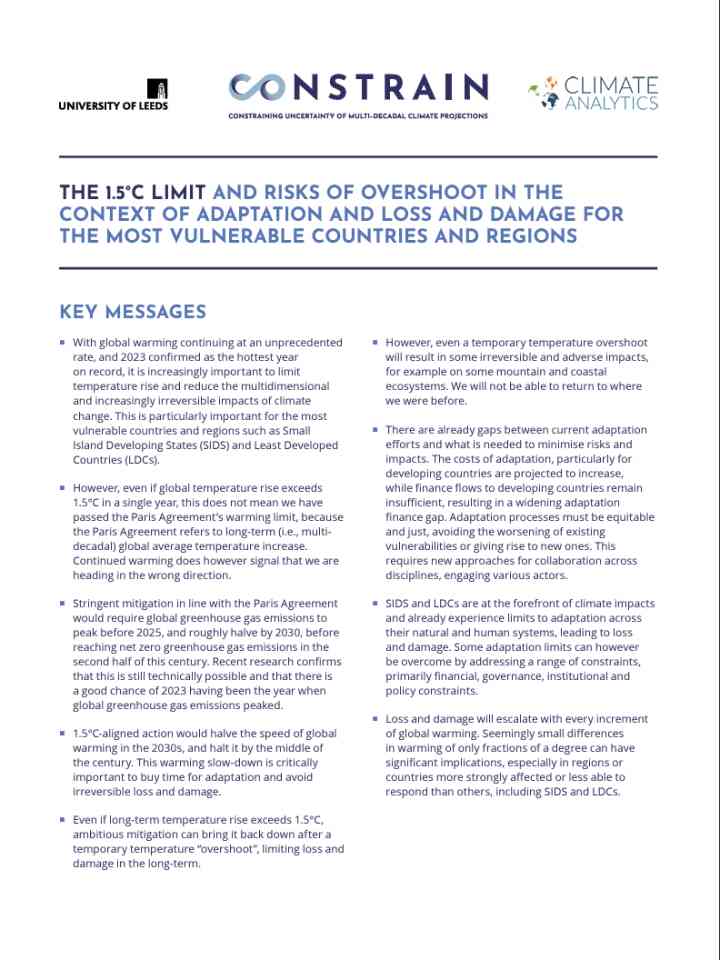The 1.5°C limit and risks of overshoot in the context of adaptation and loss and damage for the most vulnerable countries and regions
This publication covers a new briefing note on adaptation and loss and damage for the most vulnerable countries and regions. It considers where we are now in terms of the Paris Agreement’s long-term temperature limit, and what future mitigation action could mean for adaptation and loss and damage, focusing on Small Island Developing States (SIDS) and Least Developed Countries (LDCs). Lastly, it highlights progress and challenges, including financial, and the need for equitable and just action.
Key messages from the publication include:
- With global warming continuing at an unprecedented rate, and 2023 confirmed as the hottest year on record, it is increasingly important to limit temperature rise and reduce the multidimensional and increasingly irreversible impacts of climate change. This is particularly important for the most vulnerable countries and regions such as Small Island Developing States (SIDS) and Least Developed Countries (LDCs).
- SIDS and LDCs are at the forefront of climate impacts and already experience limits to adaptation across their natural and human systems, leading to loss and damage. Some adaptation limits can, however, be overcome by addressing a range of constraints, primarily financial, governance, institutional, and policy constraints.
- Loss and damage will escalate with every increment of global warming. Seemingly small differences in warming of only fractions of a degree can have significant implications, especially in regions or countries more strongly affected or less able to respond than others, including SIDS and LDCs.
Explore further
